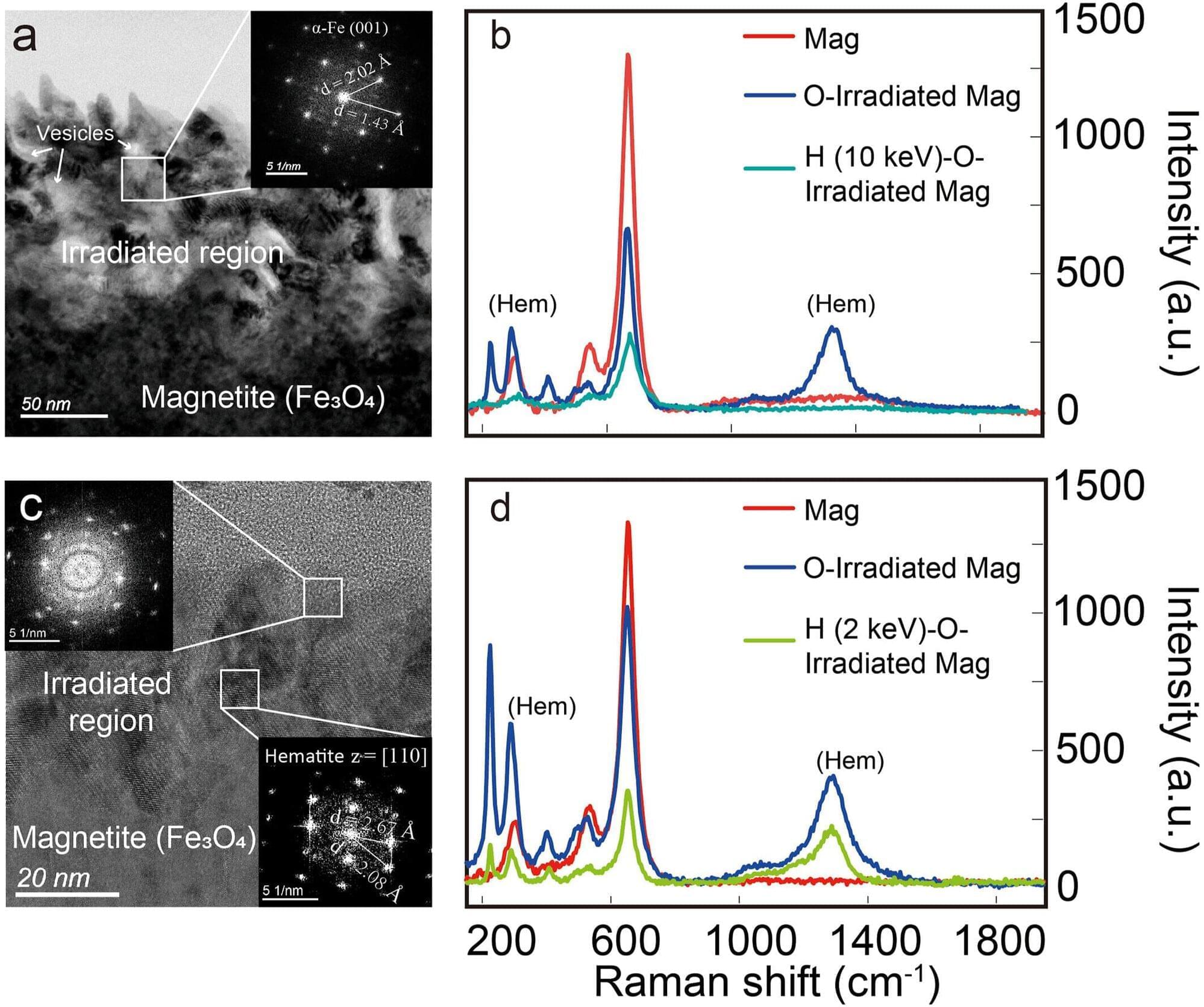In 2020, scientists reported the detection of hematite, an iron oxide mineral otherwise known as rust, distributed through the higher latitudes of the moon, particularly on the nearside. This came as a surprise, considering the low concentrations of oxygen—which is required for the formation of rust—on the moon. Researchers proposed several theories to account for the origins of the oxygen in moon rust, including the degassing of volatiles from lunar magma, asteroids, comets, or large impact events.
However, the only explanation that could account for the distribution patterns of the hematite was that oxygen ions were being transported to the moon by Earth’s magnetosphere. This occurs during the five or so days per month when Earth sits between the sun and moon, allowing parts of its atmosphere to be blown onto the surface of the moon. The phenomenon is referred to as “Earth wind.” At other times, the moon is primarily exposed to the low energy hydrogen ions from solar wind.
A group of scientists has recently provided more evidence backing up this theory. The study, published in Geophysical Research Letters, sought to test whether Earth wind could produce the hematite by setting up a series of lab experiments mimicking the conditions on the lunar surface. The team did this by irradiating various iron-bearing minerals found on the moon with oxygen and hydrogen at energies expected from particles in Earth wind, as well as hydrogen ions, like those from solar wind.






